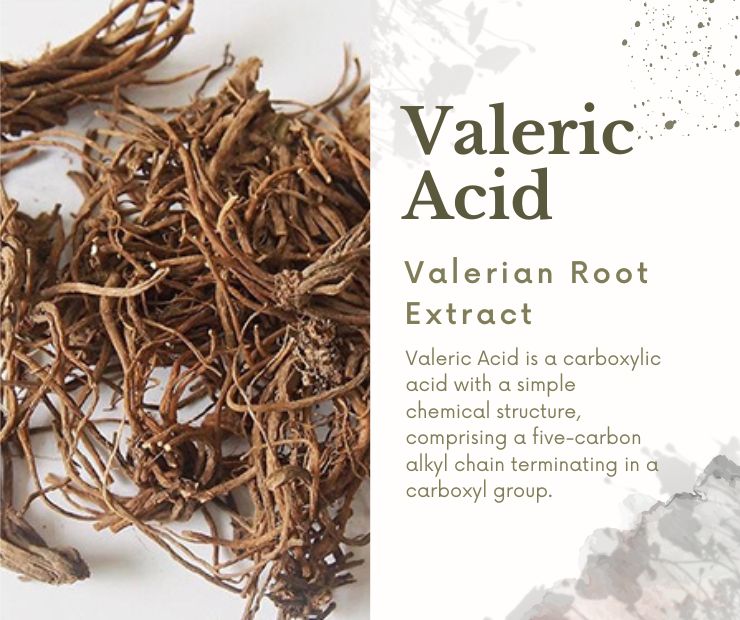Valeric Acid: Unveiling the Multi-faceted Nature of this Fascinating Compound
In the vast world of organic compounds, Valeric Acid shines as an intriguing and versatile molecule. This chemical substance, also known as pentanoic acid, holds significant importance in various fields, from the food and fragrance industries to pharmaceutical and agricultural applications. In this blog, we will explore the captivating nature of Valeric Acid, uncovering its diverse roles and contributions to different aspects of our lives.
- What is Valeric Acid?
Valeric Acid is a carboxylic acid with a simple chemical structure, comprising a five-carbon alkyl chain terminating in a carboxyl group. Its molecular formula is C5H10O2. Despite its seemingly modest structure, Valeric Acid plays a crucial role in the synthesis of several essential compounds and acts as a building block for more complex molecules.
- Natural Occurrence and Synthesis:
Valeric Acid can be found naturally in various sources, including certain fruits, flowers, and essential oils. It is responsible for the distinctive smell of valerian roots, from which the compound derives its name. The acid can also be synthesized through chemical processes, enabling its use in industrial applications.
- Culinary and Flavoring Agent:
Valeric Acid finds application in the food industry as a flavoring agent. It imparts a fruity, slightly sour taste, and its esters enhance the aroma and flavor of many food products. Additionally, the acid contributes to the character of aged cheeses, adding depth to their taste.
- Pharmaceutical Applications:
In the realm of medicine, Valerian Extract serves as a starting material for the synthesis of various pharmaceuticals. It is a critical ingredient in the production of valproic acid, a well-known anticonvulsant and mood-stabilizing medication used to treat epilepsy and bipolar disorder.
- Agricultural Significance:
Valeric Acid also plays a role in agriculture, serving as a potent insect attractant. Its unique scent attracts certain pests, enabling farmers to use it as bait in traps to monitor and control pest populations, reducing the need for harmful pesticides.
- Industrial Uses:
Beyond its applications in food, medicine, and agriculture, Valerian Root Extract has an array of industrial uses. It serves as a solvent in chemical processes, finds use in the manufacture of plastics, and acts as a precursor in the production of synthetic lubricants.
- Environmental Impact:
As with any chemical substance, Valerian Root Extract’s production and usage raise environmental considerations. Understanding its environmental impact and implementing sustainable practices are crucial steps toward responsible usage.
Conclusion:
Valeric Acid may not be a household name, but its influence permeates various aspects of our lives. From enhancing the taste of our favorite dishes to contributing to groundbreaking pharmaceuticals and even aiding in pest management, this unassuming molecule has demonstrated incredible versatility. By continuing to explore and responsibly harness the potential of Valeric Acid, we can unlock new possibilities across different industries, while preserving and protecting our environment for generations to come.

Comments
Post a Comment